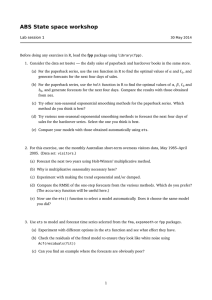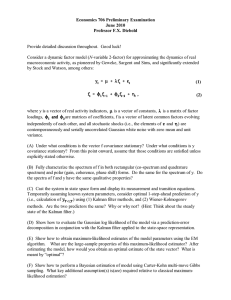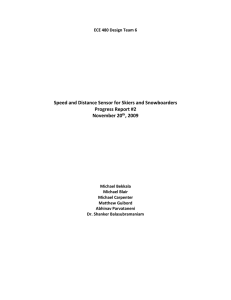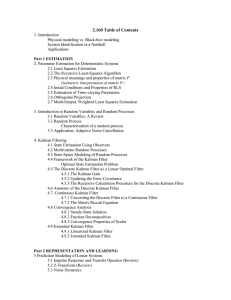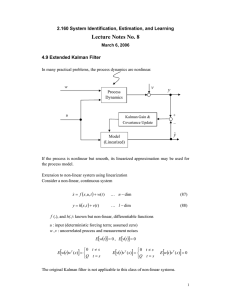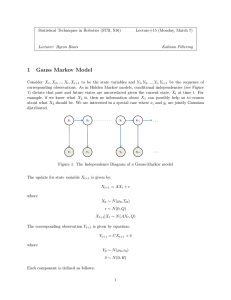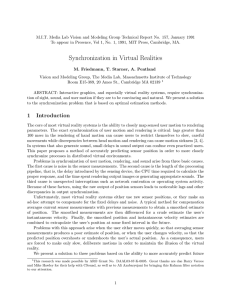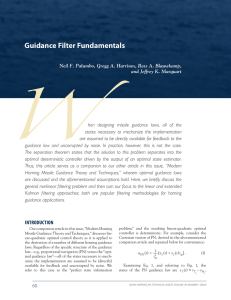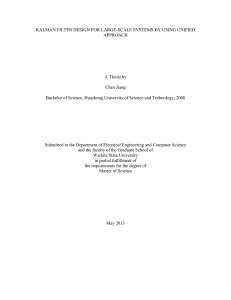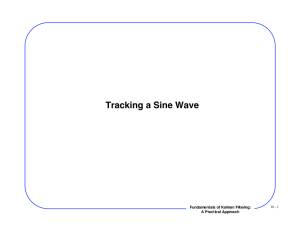ABS State space workshop
advertisement
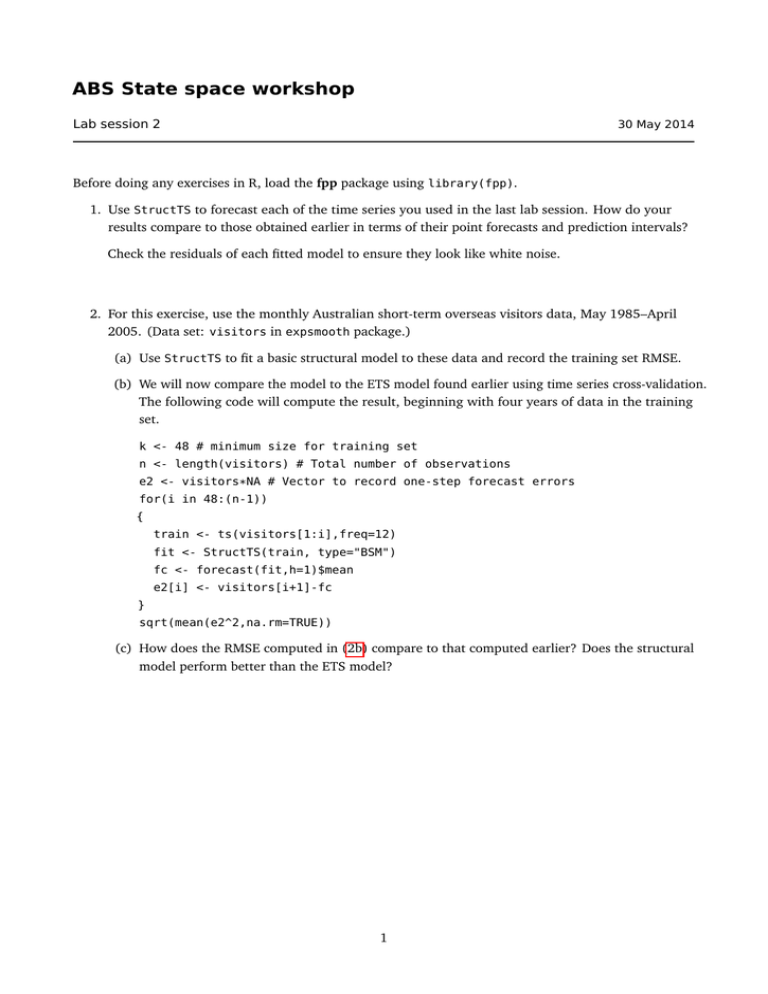
ABS State space workshop
Lab session 2
30 May 2014
Before doing any exercises in R, load the fpp package using library(fpp).
1. Use StructTS to forecast each of the time series you used in the last lab session. How do your
results compare to those obtained earlier in terms of their point forecasts and prediction intervals?
Check the residuals of each fitted model to ensure they look like white noise.
2. For this exercise, use the monthly Australian short-term overseas visitors data, May 1985–April
2005. (Data set: visitors in expsmooth package.)
(a) Use StructTS to fit a basic structural model to these data and record the training set RMSE.
(b) We will now compare the model to the ETS model found earlier using time series cross-validation.
The following code will compute the result, beginning with four years of data in the training
set.
k <- 48 # minimum size for training set
n <- length(visitors) # Total number of observations
e2 <- visitors*NA # Vector to record one-step forecast errors
for(i in 48:(n-1))
{
train <- ts(visitors[1:i],freq=12)
fit <- StructTS(train, type="BSM")
fc <- forecast(fit,h=1)$mean
e2[i] <- visitors[i+1]-fc
}
sqrt(mean(e2^2,na.rm=TRUE))
(c) How does the RMSE computed in (2b) compare to that computed earlier? Does the structural
model perform better than the ETS model?
1
ABS State space workshop
Lab session 2
3. In this exercise, you will write your own code for updating regression coefficients using a Kalman
filter. We will model quarterly growth rates in US personal consumption expenditure ( y) against
quarterly growth rates in US real personal disposable income (z). So the model is y t = a + bz t + " t .
The corresponding state space model is
yt = at + bt zt + "t
a t = a t−1
b t = b t−1
which can be written in matrix form as follows:
y t = f t0 x t + " t ,
" t ∼ N(0, σ2t )
x t = G t x t−1 + u t
where
f t0
= [1 z t ],
a
xt = t ,
bt
w t ∼ N(0, W t )
1 0
Gt =
,
0 1
and
0 0
Wt =
.
0 0
(a) Plot the data using plot(usconsumption[,1],usconsumption[,2]) and fit a linear regression model to the data using the lm function.
(b) Write some R code to implement the Kalman filter using the above state space model. You can
(c) Estimate the parameters a and b by applying a Kalman filter and calculating x̂ T |T . You will
need to write your own code to implement the Kalman filter. [The only parameter that has
not been specified is σ2 . It makes no difference what value you use in your code. Why?]
(d) Check that your estimates are identical to the usual OLS estimates obtained with the lm function?
(e) Use your code to obtain the sequence of parameter estimates given by x̂ 1|1 , x̂ 2|2 , . . . , x̂ T |T .
(f) Plot the parameters over time. Does it appear that a model with time-varying parameters
would be better?
(g) How would you estimate σ2 using your code?
4. (a) Repeat Exercise 3, but this time use the dlm package to implement the Kalman filter.
(b) Check that you get the same series of parameter estimates.
2

